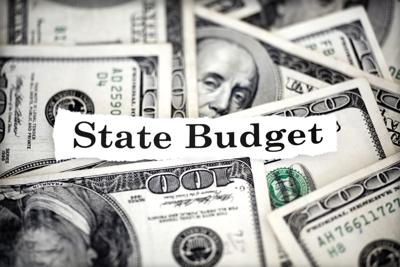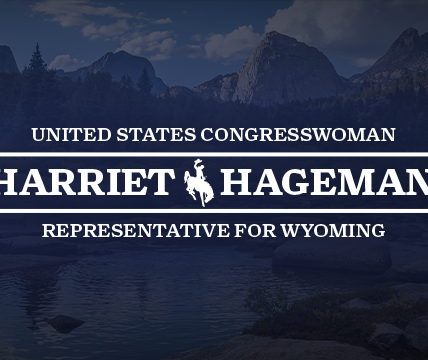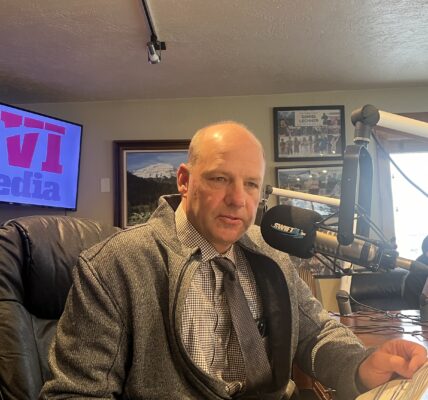By Tom Coulter
Wyoming Tribune Eagle
Via- Wyoming News Exchange
CHEYENNE – Gov. Mark Gordon revealed the details of Wyoming’s initial round of budget cuts Wednesday afternoon, with state agencies cutting more than $250 million to essential programs and eliminating a total of 274 state positions.
Gordon first announced the cuts last month, with the state facing a $1.5 billion total revenue shortfall projected over the next two years. In a news conference Wednesday afternoon, the governor said the cuts will be “devastating” across the state.
“They will impact absolutely all Wyoming residents in some way,” Gordon said. “They will be felt by our communities, by our citizens, by our businesses, and not just those who are in government.”
The cuts will impact every state agency, though the largest impacts will be felt in the state’s Department of Health, Department of Family Services, Department of Corrections and higher education.
When including cuts to major maintenance and matching federal money, the overall reduction totals about $361 million. Most of the 274 eliminated positions were vacant, State Budget Department Director Kevin Hibbard said during the press conference.
With the largest budget of any state agency, the Department of Health will see an $89 million cut to its general fund budget, along with an immediate loss of about $28 million in federal matching funds for programs.
A wide range of services for the state’s most vulnerable populations will be impacted. For example, the health department’s reductions include a nearly $9 million cut to local child development programs for infants and children with developmental disabilities.
The cuts will also have ripple effects in the private sector. The gradual elimination of a WDH program providing in-home care to those at risk of premature institutionalization will result in layoffs or reduced work hours for 120 staff members employed by health care providers, according to budget documents.
“Each of these is an agonizing choice, and … rest assured that none of these have come easy, nor are these being put out as some sort of political statement,” Gordon said. “These are the cuts that we’ve had to make, and there are more to come.”
Given the $250 million cut only makes up a portion of the overall shortfall, state agencies have already submitted preliminary proposals for another round of 10% cuts. Gordon said his office is already working on them, and the next round of cuts will be unveiled in early fall.
Health Department Director Michael Ceballos, in a statement on the cuts, said “reductions of this scale can’t be made without significant impacts in communities across the state.”
“If it remains necessary to go ahead with this next round of reductions, we will see significant program eliminations and larger changes to existing programs, with even greater impact on our partners and those citizens we serve,” Ceballos said.
The only part of state government left untouched by the first round of cuts is Wyoming’s K-12 education system, which is facing a roughly $500 million revenue deficit as part of the state’s $1.5 billion shortfall. Unlike with other state agencies, Gordon lacks the explicit authority to cut education without legislative approval, though he offered an initial proposal Wednesday.
“Given this ambiguity, I believe the best approach, and one that I am taking today, is to reach out and ask school districts to voluntarily join with the rest of state government and start to look at how they can implement 10% cuts,’ Gordon said. “This is where local control comes in. They know best where to make those cuts.”
But higher education did not miss out on the reductions unveiled Wednesday. The University of Wyoming had roughly $42 million cut from its general fund budget, while the commission overseeing the state’s seven community colleges took a hit of about $25 million.
With many of the 274 cut positions currently unfilled, the vast majority of those come from the Wyoming Department of Corrections, where 165 positions across several facilities have been eliminated.
Gordon also acknowledged that even with the cuts, the state must either “spend our way out of savings” or “cut deeper.” However, the governor also made note of the state’s other option: raising more revenue.
“I do think that to be responsible, we’re going to have to have a discussion about revenues and ways where you can change your revenues,” Gordon said.
During its meeting Tuesday, the Legislature’s Joint Revenue Interim Committee rejected several tax proposals, and Gordon said he didn’t think it was “a big surprise” that the lawmakers didn’t advance any of the measures.
“Part of it comes back to me to indicate that sure, we can spend the entire ‘rainy day’ account down over the next two years, and then what?” Gordon asked. “We’re approaching this cliff, and we really don’t have a way to effect a slowdown, a pause. We need to look at all those things.”
Whether there’s an appetite among state lawmakers to avoid that cliff remains to be seen. Reached before the press conference, House Speaker Steve Harshman, R-Casper, said there is still a general disconnect in the public on how state government can continue to operate.
“In the end, the public will kind of drive it,” Harshman said. “This 10% thing is just going to be the first glimpse, and it’s not going to solve our problems – not even close.”
The House speaker was hopeful that attitudes could change as residents begin to grasp the financial crisis Wyoming finds itself in.
“I don’t think (Wyomingites) are going to want to see us fire 3,000 teachers statewide,” Harshman said. “We’ve got to have this conversation, and we’ve got a little bit of savings to get us through a little while longer.”
Wyoming’s “rainy day” account is projected to have about $977 million at the end of the 2021-22 biennium, just slightly above the roughly $877 million revenue shortfall projected at that point for its general fund.
“I think that we’re probably going to use a lot of that (savings), or all of it,” Harshman said. “We’re going to have to if we can’t raise any revenue.”







